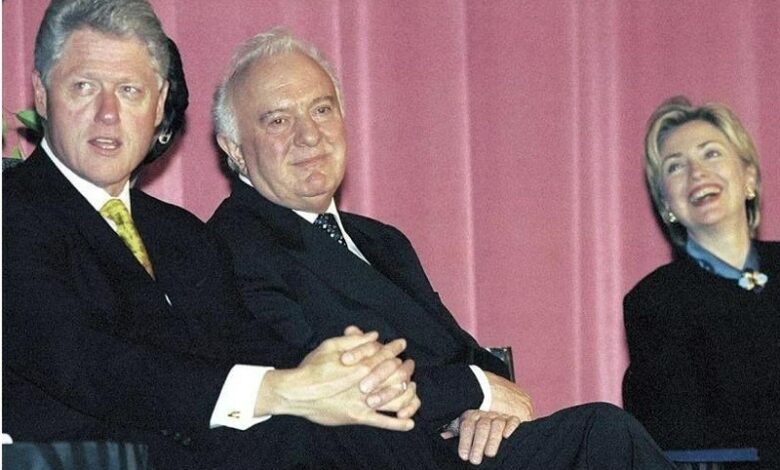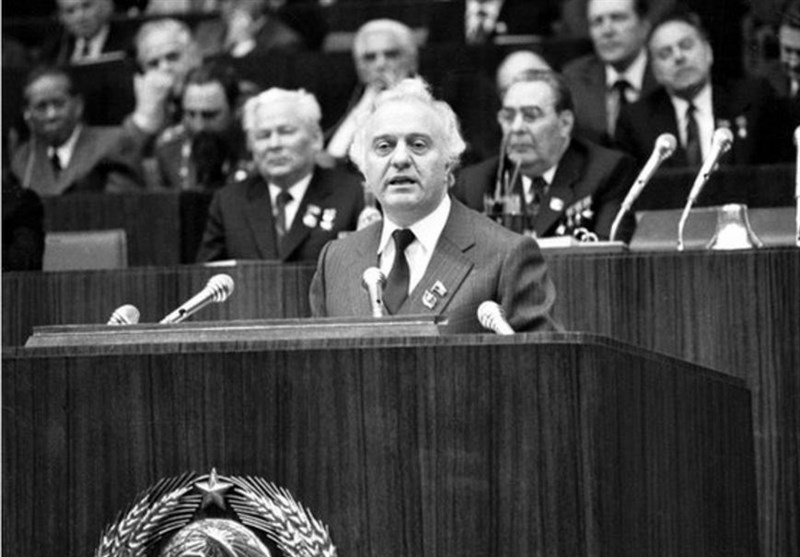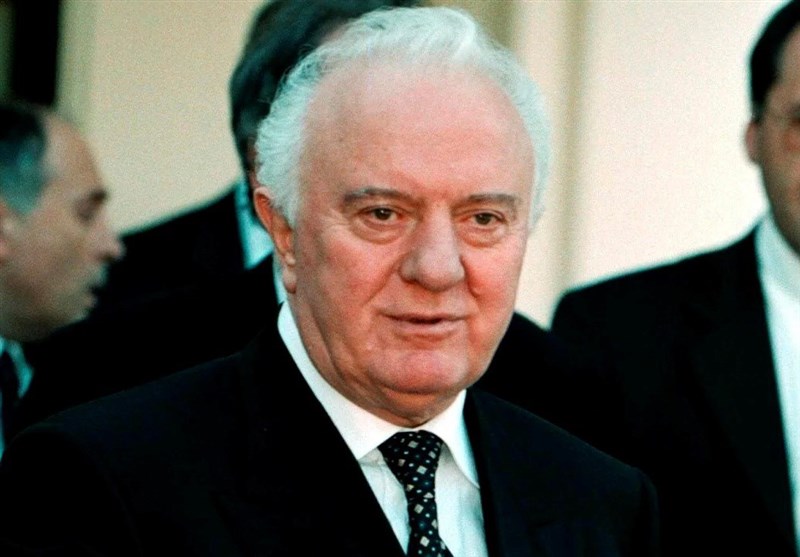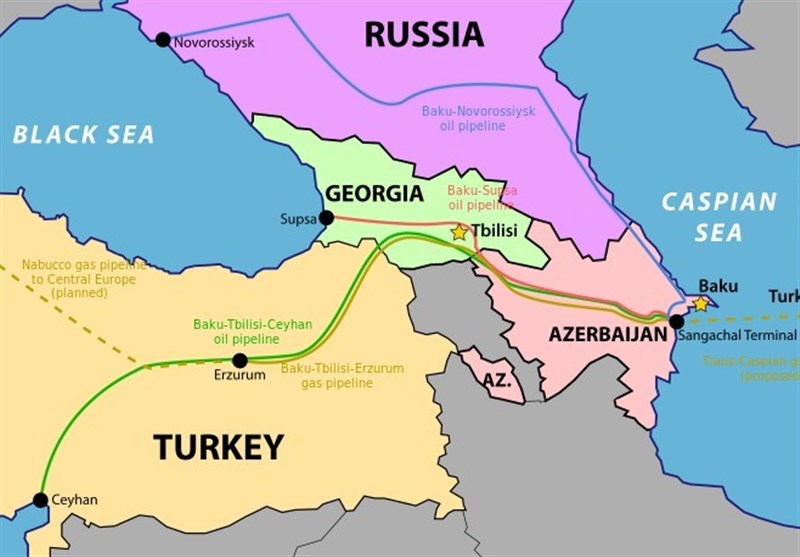Georgia from the inside Shevardnadze and stabilization of the foundations of Westernism

| One of the most important actions of the Caucasian White Fox in Georgia was to change the economic and political structures. From the very beginning of being in power, as during his tenure as the Soviet Foreign Ministry, Shevardnadze tried to push the arrow direction of his reforms to the West. |
According to the international group Tasnim news agency, “Edward Shevardnadze” from At the very beginning of his tenure as the Soviet Foreign Ministry, he tried to point the arrow of his reforms towards the West and establish structural relations with the United States and Europe.
The period of Shevardnadze’s presidency until the Rose coup (2003)
The overthrow of Gamsakhurdia and the start of civil wars, a result other than the return of ” The White Fox of the Caucasus” did not enter the political scene of Georgia. Eduard Shevardnadze, the last foreign minister of the Soviet Union, was invited to the country by the invitation of the military council, which consisted of the coup forces, just a few months after the overthrow of the first legitimate president of Georgia, to take the helm of the country’s political leadership in the turbulent sea of those days of the fledgling Georgian revolution. .
The military council led by Tengiz Kitovani had no experience in government building and structuring, and as a result, after two months of management failure and complete turmoil in the country, they invited Eduard Shevardnadze to return to the homeland. return and take over the political leadership of the country.
This was not the first time that Shevardnadze took over the reins of government in Georgia. In 1972, he was elected as the first secretary of the Central Committee of the Communist Party of Georgia for 13 years. In fact, with this title, Shevardnadze is considered the first person of Soviet Georgia.
At that time, with the slogan of struggle It started with corruption and the creation of a dynamic shadow economy in Soviet Georgia. In the first year and a half of the fight against corruption, he ordered to clean up the administrative system of Georgia, and as a result, he dismissed 20 ministers, 44 party committee secretaries, 3 party committee secretaries in Georgian cities, 10 heads of the executive committee and their deputies in different regions. .
Also, in the first five years of holding the position of the first secretary of the party, 40 thousand people were fired and 30 thousand people were arrested, more than half of them were members of the Soviet Communist Partywere.
The index of Shevardnadze’s actions in his 13 years as the head of Georgia was to carry out extensive economic reforms and change the position of this republic in the economic structure of the Soviet Union.
Under Shevardnadze, Georgia became a testing ground for economic reforms that were later implemented as a successful model throughout the Soviet Union. In 1985, when Gorbachev invited Shevardnadze to serve as Foreign Minister, Georgia was one of the most prosperous Soviet republics with a high economic growth rate compared to Moscow and other Soviet republics.
6 years after leaving Georgia, Shevardnadze returned to a country impoverished by civil strife. The two regions of Abkhazia and South Ossetia were trying to separate, and the economy of this country was in complete recession and bankruptcy, and the civil wars with the supporters of President Gamsakhurdia in Western Georgia had brought this fledgling republic close to destruction. During the civil war, Georgia’s industry and infrastructure was destroyed, and much of its territory came under the control of criminal paramilitary groups.
Shevardnadze returned to Georgia in early March 1992. Some politicians interpreted this return as a desire to help the country in difficult situations, while others interpreted it as a desire for power. After his return, on March 10, 1992, he was appointed as the head of the State Council of the Republic of Georgia, which replaced the Military Council. government in Kurdish Georgia, some of the newly appointed agents came with him from Moscow and others were selected from local personnel.
Faced with many problems, including separatist actions in the border regions of Abkhazia and South Ossetia, the priority of its activities was based on managing the crises of these two regions.
On May 7, 1992, Shevardnadze, as the president The State Council of Georgia signed a resolution related to solving complex problems and the functioning of the border region of the Autonomous Republic of Abkhazia.
On June 24, 1992, in Sochi , he signed an agreement with Russian President Boris Yeltsin on the principles of a peaceful settlement of the Georgia-South Ossetia conflict that temporarily halted the military conflict between Georgia and South Ossetia, but Shevardnadze’s efforts to restore Georgian sovereignty in the Abkhazia region were unsuccessful. It led to the defeat of the Georgian army and the expulsion of the vast majority of the population of Georgian descent from the Abkhazia region.
In the same year, the Georgian Parliament announced its dissolution and transferred its legislative responsibilities to the new “State Assembly”. Altasis was entrusted, which was headed by Shevardnadze. Originally, this assembly was responsible for the functions of the founding assembly. With this action, Shevardnaze assumed full power in the country and the task of creating a new constitution in Georgia. He stated, the return of stability and the process of creating a legal government based on internationally accepted structures is one of the most important achievements of the Shevardnadze government until the 1995 presidential election.
One of the most important actions of the Caucasian White Fox In Georgia, there was a change in economic and political structures. From the very beginning of being in power, as during his tenure as the Soviet Foreign Ministry, Shevardnadze tried to point the arrow of his reforms towards the West and establish structural relations with the United States and Europe.
Edward Shevardnadze and Bill Clinton during the signing of the agreement on the opening of the military missions of the two countries and the implementation of the “military cooperation program”. Washington, March 7, 1994
In 1995, after the preparation and approval of the new constitution of Georgia, the second presidential election was held in this country, and Eduard Shevardnadze won 72.9% of the 6 candidates. Ara was elected as the second president of Georgia. The political and economic orientation that Shevardnadze considered for Georgia’s exit from the crisis and progress was to be close to the Euro-Atlantic structures and to avoid conflict and political dealings with Russia.
Georgia’s move towards western structures, Shevardnadze’s government received numerous loans from western institutions in order to revive the collapsed and bankrupt economy of this country.
However, Shevardnadze was able to restart the industrial structure. There was no country, the economy was paralyzed, systemic corruption had engulfed the entire country, and the expenses related to the two wars with the separatists of Abkhazia and South Ossetia put a heavy burden on the government’s budget.
Among these growing problems, Shevardnadze’s popularity gradually decreased, factors such as the failure to solve important issues such as the separatism of the Abkhazia and South Ossetia regions, which caused the Russians to be deployed as peacekeeping forces in the Ossetia region, or the defeat of the separatist forces of Abkhazia had put Shevardnadze in a difficult position. But with all these interpretations, he was re-elected as president in 2000, although the results of this vote were doubted by the alleged fraud in the counting of votes.
Shevardnadze’s presence in the short-term war with Abkhazia separatists that led to the defeat of the Georgian army Nevertheless, during Shevardnadze’s time, some characteristics of a democratic society emerged in Georgia.
He was also able to expand and strengthen Georgia’s connections with its partners in the region and Western structures. The press was largely free, the country had a vibrant parliament and an active civil society, even though the country’s political arena was dominated by the president’s party, the “Union of Georgian Citizens”.
Shevardnadze By persuading the politicians and intellectuals of the society, he pushed Georgia towards the West at a great speed, in such a way that Georgia applied for membership in the World Trade Organization, the Council of Europe and the Partnership for Peace program of NATO.
By proposing the transit route of energy, i.e. Caspian oil and gas, to Turkey and Europe, he contracted his relations with the eastern neighbor, Azerbaijan, which had significant oil and gas resources, and also his relations with Turkey. Kars” as Georgia’s bridge to Europe and the Middle East.
Today, the Baku-Tbilisi-Ceyhan oil pipeline runs from Azerbaijan (and to some extent Central Asia) through Georgia. It transfers to Turkey and other countries, especially the occupied territories. It should also be mentioned the South Caucasus gas pipeline, which guarantees and strengthens strong economic relations between Ankara, Baku and Tbilisi.
Transit map of Baku-Tbilisi-Ceyhan pipeline/Baku-Tbilisi Erzurum pipeline (European pipeline)/Baku pipeline – Tbilisi – Supsa Port (Black Sea Pipeline)
Report: Mehdi Tabrizi
End of message/
| Publisher | Tasnim News |







